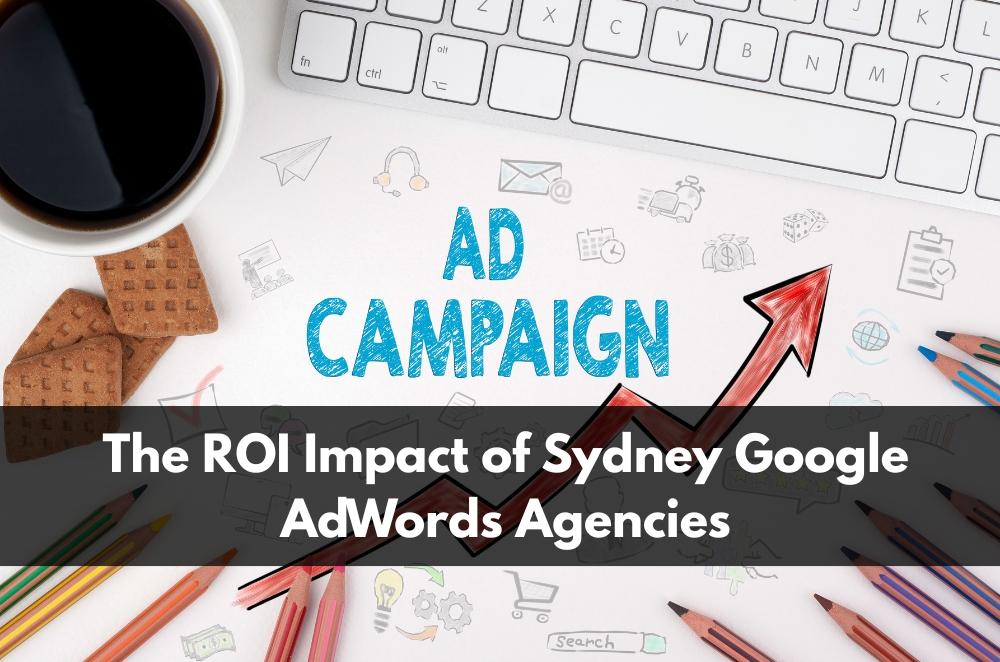The ROI Impact of Sydney Google AdWords Agencies

Return on ad spend isn’t just a number—it’s a story about targeting, timing, and tidy execution. In a busy market, you want campaigns that make money back quickly and keep doing so as they scale. Credentials alone don’t deliver that, yet they help signal competence. A phrase I look for in capability statements is certified Google AdWords partner because it suggests tested skills and structured processes. From there, the focus shifts to business maths: cost per lead, lifetime value, and the cadence of testing. When those pieces connect, the conversation moves from “cheap clicks” to compounding returns that survive seasonality and platform shifts.
Define ROI before you spend
Clear objectives shape the strategy, the testing sequence, and the way you read early data. Two sentences in a brief—profit target and time horizon—can save months of guesswork.
-
Primary conversion: Nominate the one action that matters most, such as form completion or phone call, so the account optimises around a single north star.
-
Revenue model: Map average order value and repeat purchase cadence to ensure bids reflect real margin rather than top-line vanity.
-
Break-even maths: Set target acquisition cost from gross margin and overheads, then adjust for seasonality so targets stay realistic across quarters.
-
Attribution rule: Decide whether first touch, last touch, or data-driven attribution guides decisions, and apply it consistently across reporting.
Once you’ve drawn those lines, creative and keywords have firmer guardrails. I’ve seen modest budgets outperform larger ones simply because the north star was clear and the team stuck to it when the first week’s numbers wobbled.
Targeting, privacy, and efficiency
Precise audiences lift conversion rates, but precision must sit comfortably with privacy rules. Getting this balance right keeps both risk and wastage low, especially when remarketing or using interest layers.
-
Audience hygiene: Use exclusion lists to avoid existing customers when the goal is net-new leads, reducing cannibalisation and inflated cost per lead.
-
Signal quality: Feed first-party conversions back into bidding so the system learns what profitable users look like rather than chasing cheap clicks.
-
Creative relevance: Align ad copy, extensions, and landing content with the intent in the query, improving quality scores and easing bid pressure.
-
Privacy alignment: Keep consent, data use, and transparency front of mind so targeting stays ethical and durable under changing rules.
A quick read of targeted online marketing helps frame ethical targeting as a performance choice, not just compliance. In practice, stronger consent and cleaner signals often translate into steadier, cheaper conversions as the account learns.
Forecasting and scaling decisions
Strong ROI compounds when forecasts match reality on the ground. Planning ahead prevents over-bidding on thin margins and under-funding proven segments.
-
Cohort forecasts: Project revenue by cohort and channel, matching lag times to cash collection so bids are sized responsibly.
-
Capacity guardrails: Align expected lead volume with sales follow-up capacity to avoid waste and protect close rates during busy weeks.
-
Diminishing returns: Track incremental cost per acquisition by budget step to spot the point where extra spend no longer lifts profit.
-
Scenario planning: Model best, base, and worst cases with sensitivity to click costs, conversion rates, and contribution margin.
Scaling isn’t about cranking a dial; it’s choosing where the next dollar earns more than the last. With guardrails in place, growth stays steadier, cleaner, and more profitable.
Interpreting the right metrics
Headline click numbers can look exciting while profit quietly erodes. The trick is to link platform metrics to unit economics so every chart has a cash outcome attached.
-
Diagnostic trio: Watch impression share, click-through rate, and quality score together to locate whether reach, relevance, or bidding is the bottleneck.
-
Economic anchors: Tie cost per acquisition and return on ad spend to contribution margin, not revenue, so scale decisions don’t hide shrinking profit.
-
Lag awareness: Allow for conversion delays in services with longer consideration, and use lead scoring to avoid celebrating unqualified form fills.
-
Cohort reading: Compare performance by audience, device, and time of day so budget flows to the slices that actually compound returns.
On one project, cost per lead jumped after tightening match types. Panic wasn’t needed. The close rate doubled because queries were cleaner. The blended cost per sale fell over the month, and that was the real win.
Budget, testing, and risk control
Budgets work harder with deliberate experiments. Small, well-structured tests—copy, audiences, bidding—let you harvest gains without shocking the account or the cash flow.
-
Test cadence: Run one variable at a time for clean reads, and pre-define the stop rule so losing variants don’t linger out of optimism.
-
Bid logic: Pair automated bidding with good conversion data and minimum volume thresholds, and pause experiments if signal quality dips.
-
Creative system: Build modular headlines and descriptions that rotate logically, letting the account find efficient combinations faster.
-
Landing discipline: Change one persuasive element per test—headline, proof, or form length—so uplift traces back to the right lever.
When strategy choices get crowded, it helps to weigh frameworks quietly. In that context, choosing a Google Ads agency can prompt useful questions about reporting rhythm and experimentation culture. The tone matters: steady and accountable beats flashy and vague every time.
Choose with confidence
Results tend to follow teams that communicate simply, test regularly, and keep numbers honest. If the plan links targeting to consent, bidding to margin, and creative to intent, the account learns faster and wastes less. I keep a short checklist on hand: one north star metric, one attribution rule, and one experiment running at any time. Add clear budgets, healthy exclusions, and landing pages that respect the visitor’s time, and you’ve built a machine that holds steady in busy weeks and quietly compounds in slow ones. The aim isn’t pretty graphs—it’s dependable cash outcomes that free you to plan the next quarter with a cooler head. When that rhythm clicks, ad spend stops feeling like a gamble and starts behaving like a lever you can pull with confidence.







